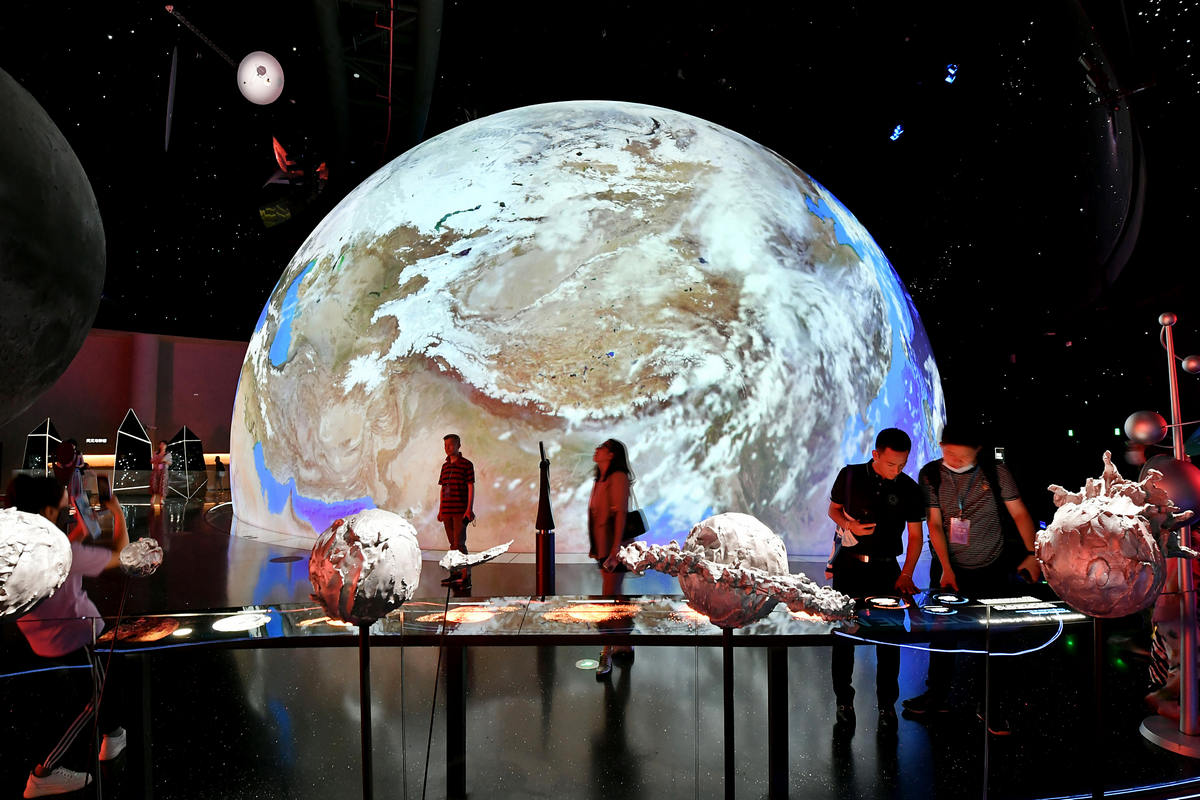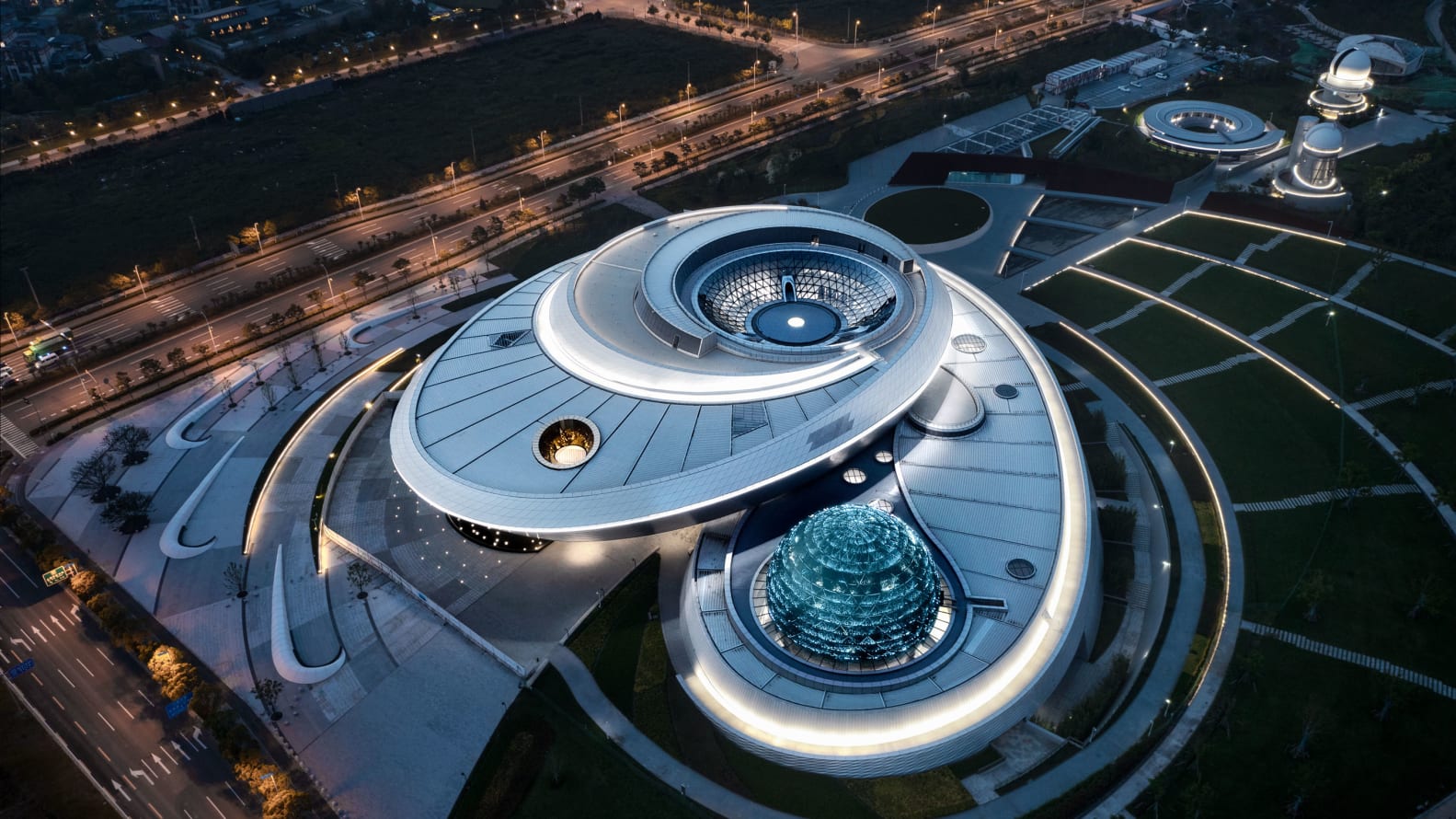The Shanghai Astronomical Museum, the world’s largest planetarium, officially opened on Saturday and welcomes audiences from Sunday.
The museum covers an area of about 58,600 square meters and is located in a special area of the Chinese (Shanghai) experimental free trade area Lingang. It is a branch of the Shanghai Museum of Science and Technology (SSTM).
The museum presents innovative architecture, exhibition spaces with various themes, immersive technologies and valuable collections.
From the air, the main building of the museum looks like a super-bowl of astronomical instruments with a round skylight, an inverted spherical dome and a domed theater.
As with the sundial mechanism, the light spot on earth changes when sunlight penetrates the round light hatch, and will be the perfect circle at noon of the summer solstice, the day with the longest light hours in the North. hemispheres.

Sihe Tower and Wansh Tower, named after the symbols of the sun and moon in ancient Chinese mythology, respectively, stand as satellites of the main building.
During the day, visitors can observe the sun through an educational solar telescope with adaptive optics in the Sihe Tower and see images of sunspots and solar flares in high resolution.
At night, the one-meter dual-focus telescope, China’s largest in terms of aperture, allows visitors to Wansh Tower to enjoy views of the moon, planets and celestial bodies in deep space.
The opening of the Shanghai Astronomical Museum is an important milestone in efforts to advance science, as Shanghai now has museums of nature, modern technology and astronomy, said Wang Lianhua, in charge of SSTM. >
Taking a tour of the main house, visitors can get a complete picture of the universe at three thematic exhibitions, including “House”, “Space” and “Odyssey”. Many other institutions are devoted to topics such as the history of Chinese astronomical research, the study of Mars, and the promotion of science among children.
The dome cinema has an 8K spherical projection system, an advanced laser system and a stage system where visitors can enjoy a show of the latest advances in astronomy.
The museum’s exhibits include about 70 meteorites from the Moon, Mars and Vesta, as well as more than 120 collections of artifacts, such as the works of Isaac Newton, Galileo Galilei and Johann Kepler.
Among the museum’s more than 300 exhibits, interactive exhibits make up more than 50 percent. Technologies such as data visualization, augmented reality, virtual reality, and biometric technologies help visitors gain astronomical and scientific knowledge through interaction.
“China has conducted fruitful deep space research in the 21st century,” said E Shuhua, an astronomer and member of the Chinese Academy of Sciences. For decades, E has worked to help establish the Shanghai Astronomical Museum.
According to him, it is important to build a planetarium to promote astronomical knowledge and support the education of young people in this field.
China has witnessed a fever of science fiction and astronomy. In 2019, China’s total science fiction production was 65.87 billion yuan ($ 10.17 billion), up 44.3 percent from a year earlier. The box office of domestic science fiction films has doubled since 2018.

Sixty-nine percent of young Chinese surveyed recently by China Youth Daily believe that the spirit and achievements of China’s manned space exploration are encouraging and inspiring.
“I feel that through the space exploration of generations of the Chinese people, we are witnessing China embarking on a new space journey,” said Wang Lu, a visitor from Shanghai after viewing a replica of the models. China’s Chang’e-5 probe, the Zhurong rover and the main module of the Tianhe space station.
«To me you

